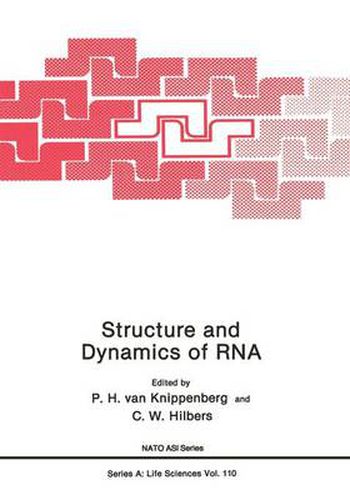Readings Newsletter
Become a Readings Member to make your shopping experience even easier.
Sign in or sign up for free!
You’re not far away from qualifying for FREE standard shipping within Australia
You’ve qualified for FREE standard shipping within Australia
The cart is loading…






This title is printed to order. This book may have been self-published. If so, we cannot guarantee the quality of the content. In the main most books will have gone through the editing process however some may not. We therefore suggest that you be aware of this before ordering this book. If in doubt check either the author or publisher’s details as we are unable to accept any returns unless they are faulty. Please contact us if you have any questions.
This volume contains contributions from the speakers at the NATO Advanced Research Workshop on 3D 5tructure and Dynamics of RNA , which was held in Renesse, The Netherlands, 21 - 24 August, 1985. Two major developments have determined the progress of nucleic acid research during the last decade. First, manipulation of genetic material by recombinant DNA methodology has enabled detailed studies of the function of nucleic acids in vivo. 5econd, the use of powerful physical methods, such as X-ray diffraction and nuclear magnetic resonance spectroscopy, in the study of biomacromolecules has provided information regarding the structure and the dynamics of nucleic acids. Both developments were enabled by the advance of synthetic methods that allow preparation of nucleic acid molecules of required sequence and length. The basic understanding of nucleic acid function will ultimately depend on a close collaboration between molecular biologists and biophy sicists. In the case of RNA, the ground rules for the formation of secondary structure have been derived from physical studies of oligoribonucleotides. Powerfull spectroscopic techniques have revealed more details of ~~A structure including novel conformations (e.g. left-handed Z-RNA). A wealth of information has been obtained by studying the relatively small transfer RNA molecules. A few of these RNAs have been crystallized, enabling determination of their three-dimensional structure. It has become apparent that non-classical basepairing between distal nucleotides gives rise to tertiary interactions, determining the overall shape of the molecule.
$9.00 standard shipping within Australia
FREE standard shipping within Australia for orders over $100.00
Express & International shipping calculated at checkout
This title is printed to order. This book may have been self-published. If so, we cannot guarantee the quality of the content. In the main most books will have gone through the editing process however some may not. We therefore suggest that you be aware of this before ordering this book. If in doubt check either the author or publisher’s details as we are unable to accept any returns unless they are faulty. Please contact us if you have any questions.
This volume contains contributions from the speakers at the NATO Advanced Research Workshop on 3D 5tructure and Dynamics of RNA , which was held in Renesse, The Netherlands, 21 - 24 August, 1985. Two major developments have determined the progress of nucleic acid research during the last decade. First, manipulation of genetic material by recombinant DNA methodology has enabled detailed studies of the function of nucleic acids in vivo. 5econd, the use of powerful physical methods, such as X-ray diffraction and nuclear magnetic resonance spectroscopy, in the study of biomacromolecules has provided information regarding the structure and the dynamics of nucleic acids. Both developments were enabled by the advance of synthetic methods that allow preparation of nucleic acid molecules of required sequence and length. The basic understanding of nucleic acid function will ultimately depend on a close collaboration between molecular biologists and biophy sicists. In the case of RNA, the ground rules for the formation of secondary structure have been derived from physical studies of oligoribonucleotides. Powerfull spectroscopic techniques have revealed more details of ~~A structure including novel conformations (e.g. left-handed Z-RNA). A wealth of information has been obtained by studying the relatively small transfer RNA molecules. A few of these RNAs have been crystallized, enabling determination of their three-dimensional structure. It has become apparent that non-classical basepairing between distal nucleotides gives rise to tertiary interactions, determining the overall shape of the molecule.